Spinal Cord and Spinal Nerve
1/87
There's no tags or description
Looks like no tags are added yet.
Name | Mastery | Learn | Test | Matching | Spaced |
|---|
No study sessions yet.
88 Terms

1
Dura Mater
What is the function of dura mater
allow blood to leave your brain, allow cerebrospinal fluid to re-enter the circulation
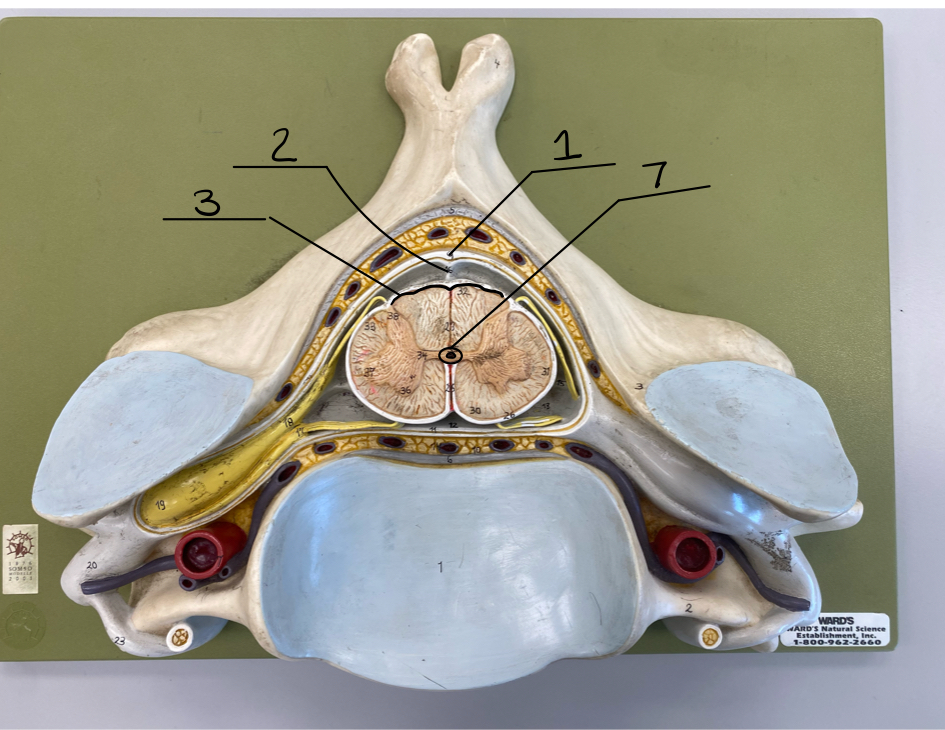
2
Arachnoid Mater
What is the function of arachnoid mater
contribute to the cerebrospinal fluid and act as a barrier
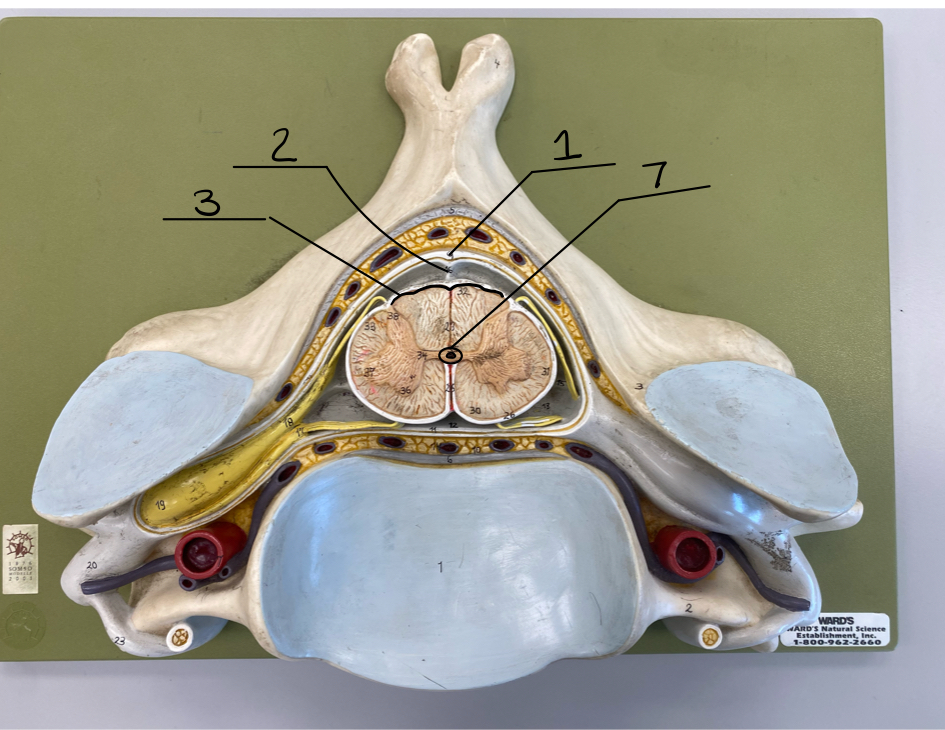
3
Pia Mater
What is the function of Pia Mater
many blood vessels pass through to supply brain tissue with blood, contain the cerebrospinal fluid
Gray Matter
site for integration (summing) EPSP and IPSP
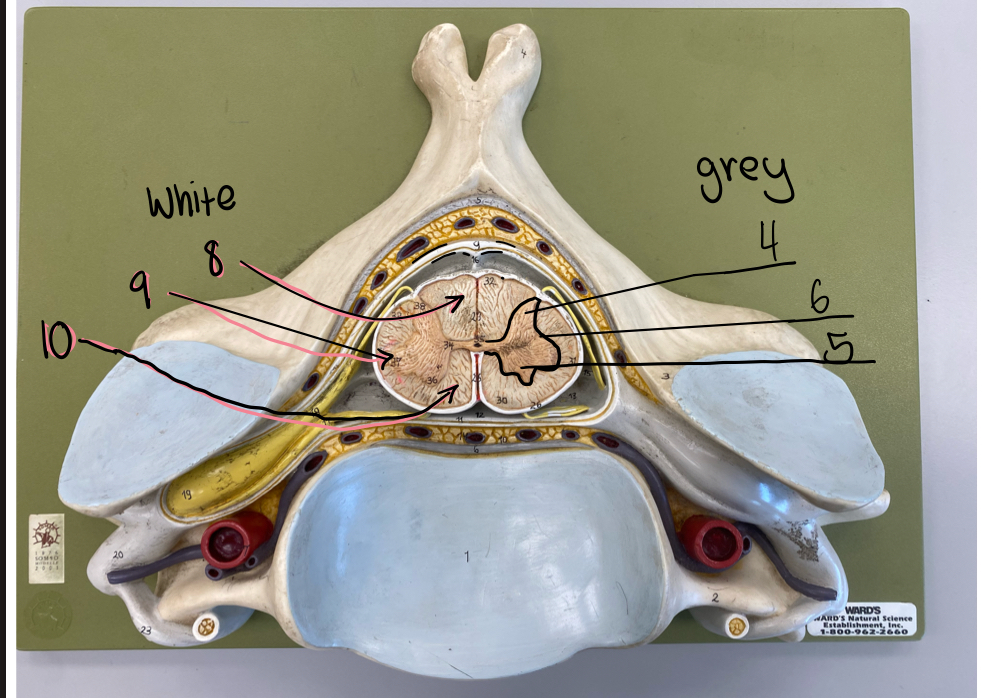
4
Posterior horn
What is the function of posterior horn
process sensory information
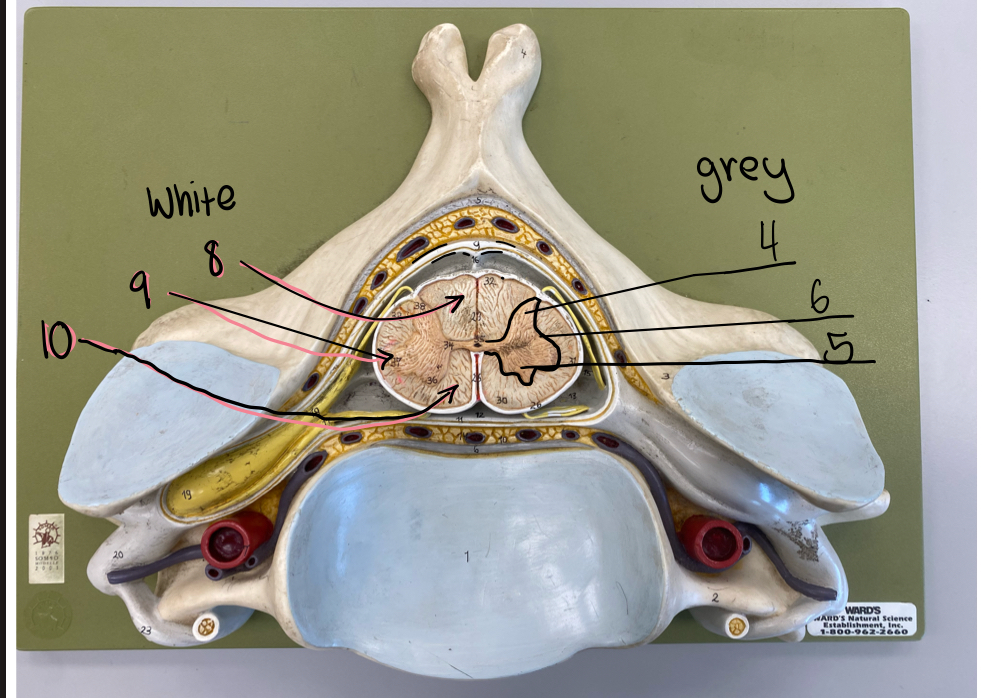
5
anterior horn
what is the function of anterior horn
motor output center

6
Lateral horn
What is the function of lateral horn
autonomic nervous system
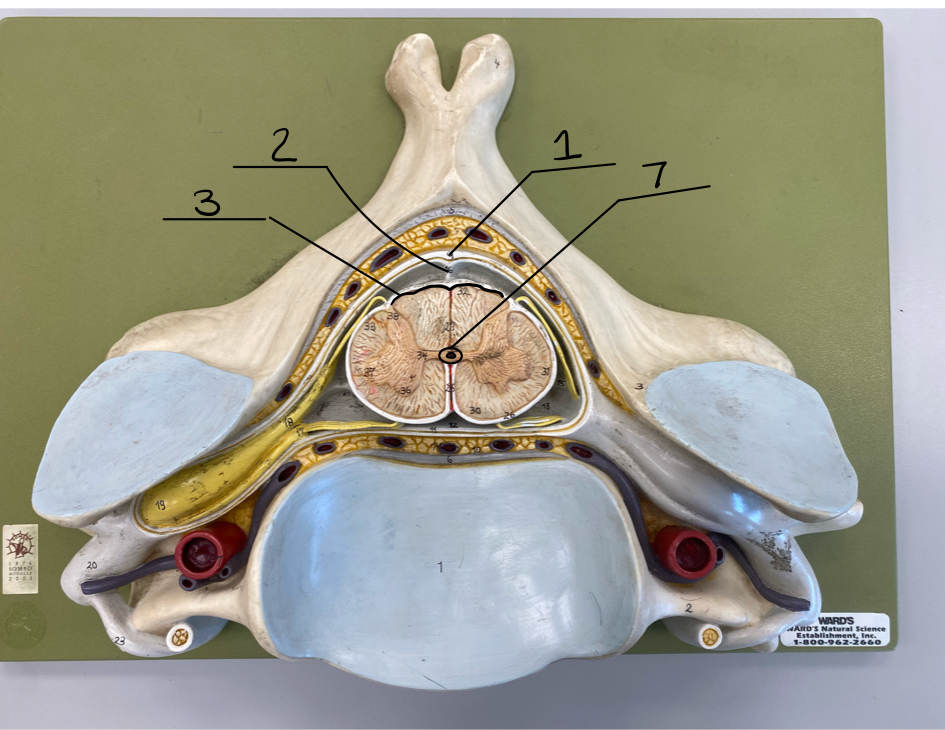
7
gray commissure
what is the function of gray commissure
bridge, passage of information between two hemispheres
white matter
dozen major sensory and motor tracts, it is the highway which sensory input travels to the brain
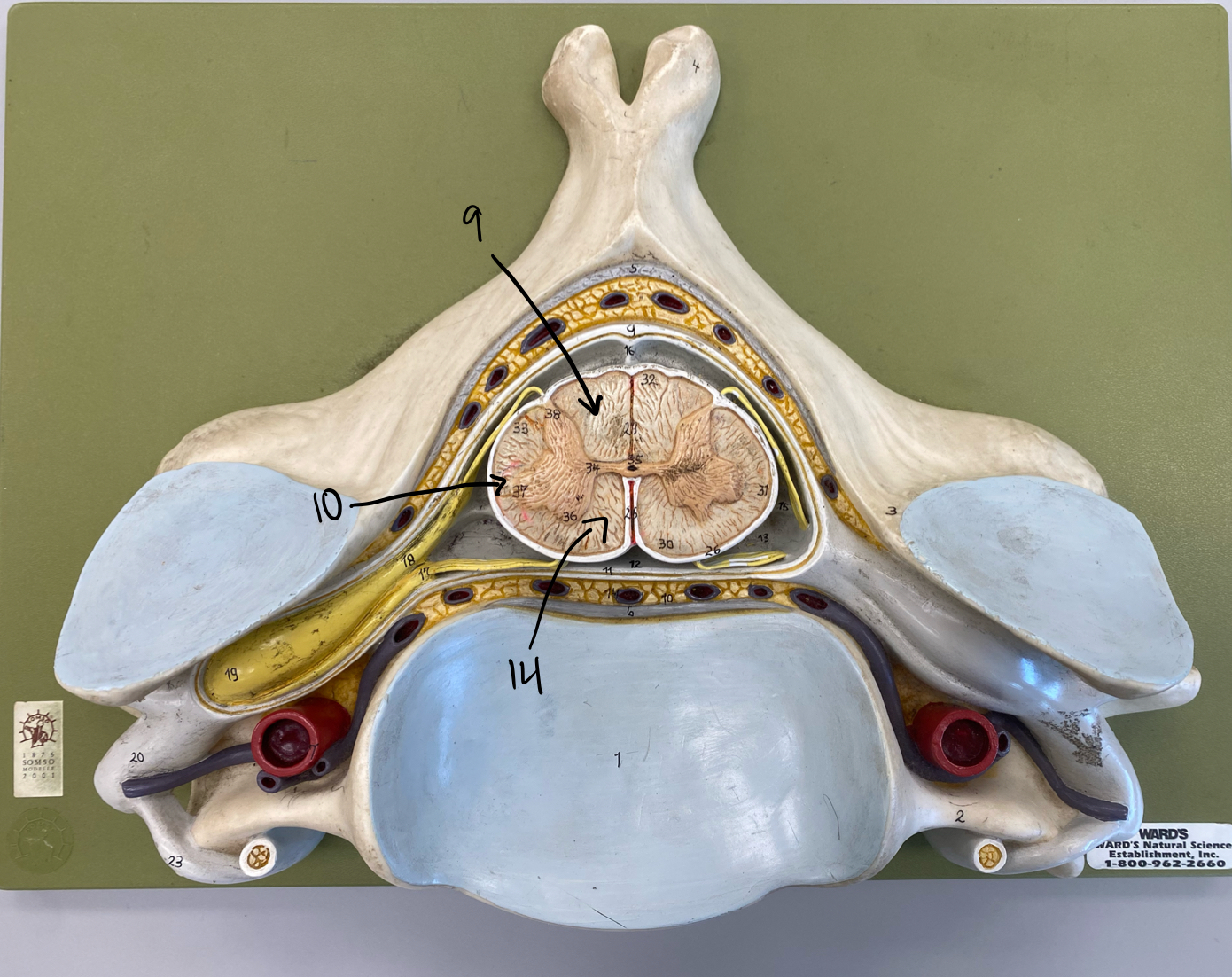
9
posterior white funculus
What is the function posterior white funculus
transmit sensory information
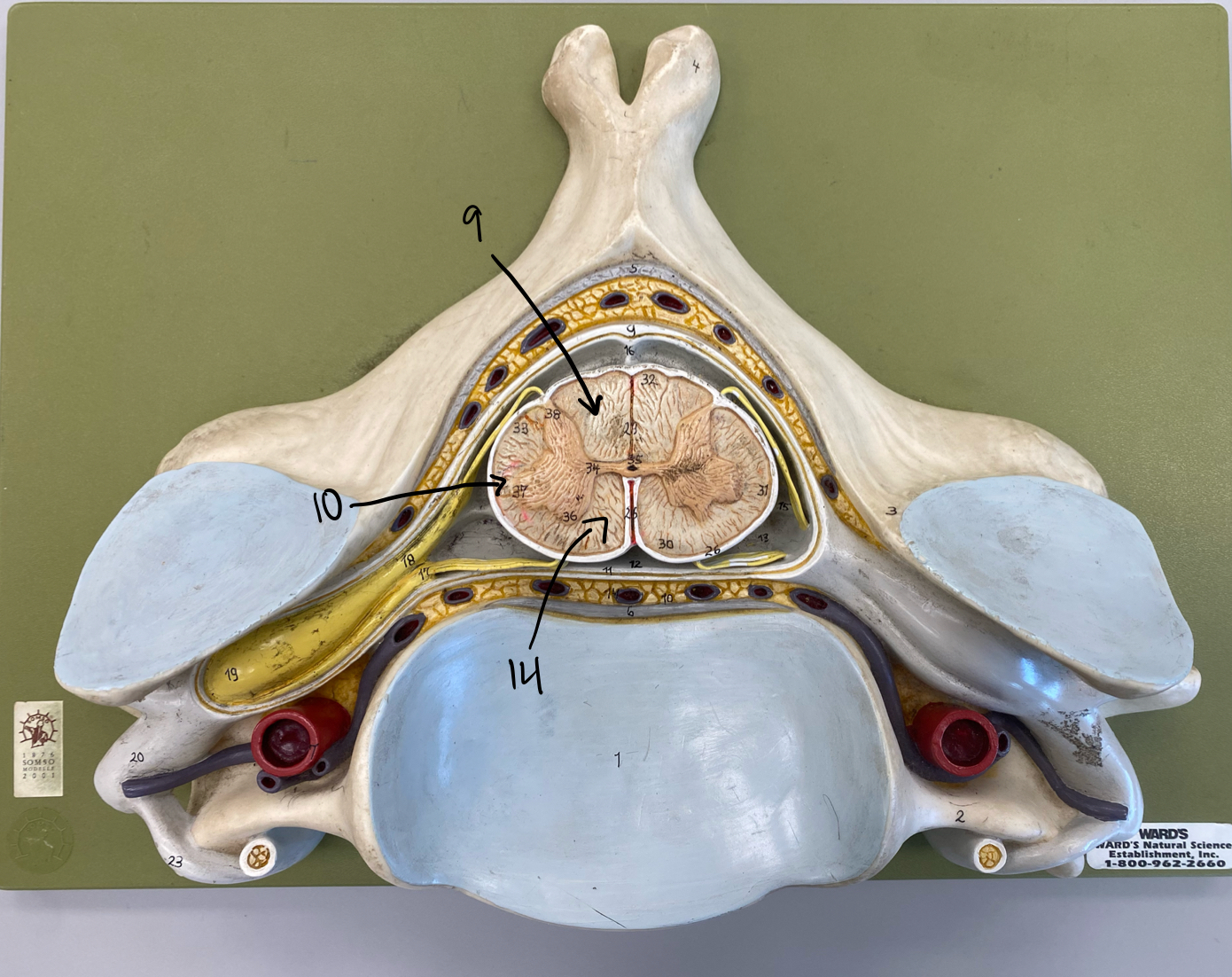
10
lateral white funiculus
What is the function of lateral white funiculus
sensory and motor function
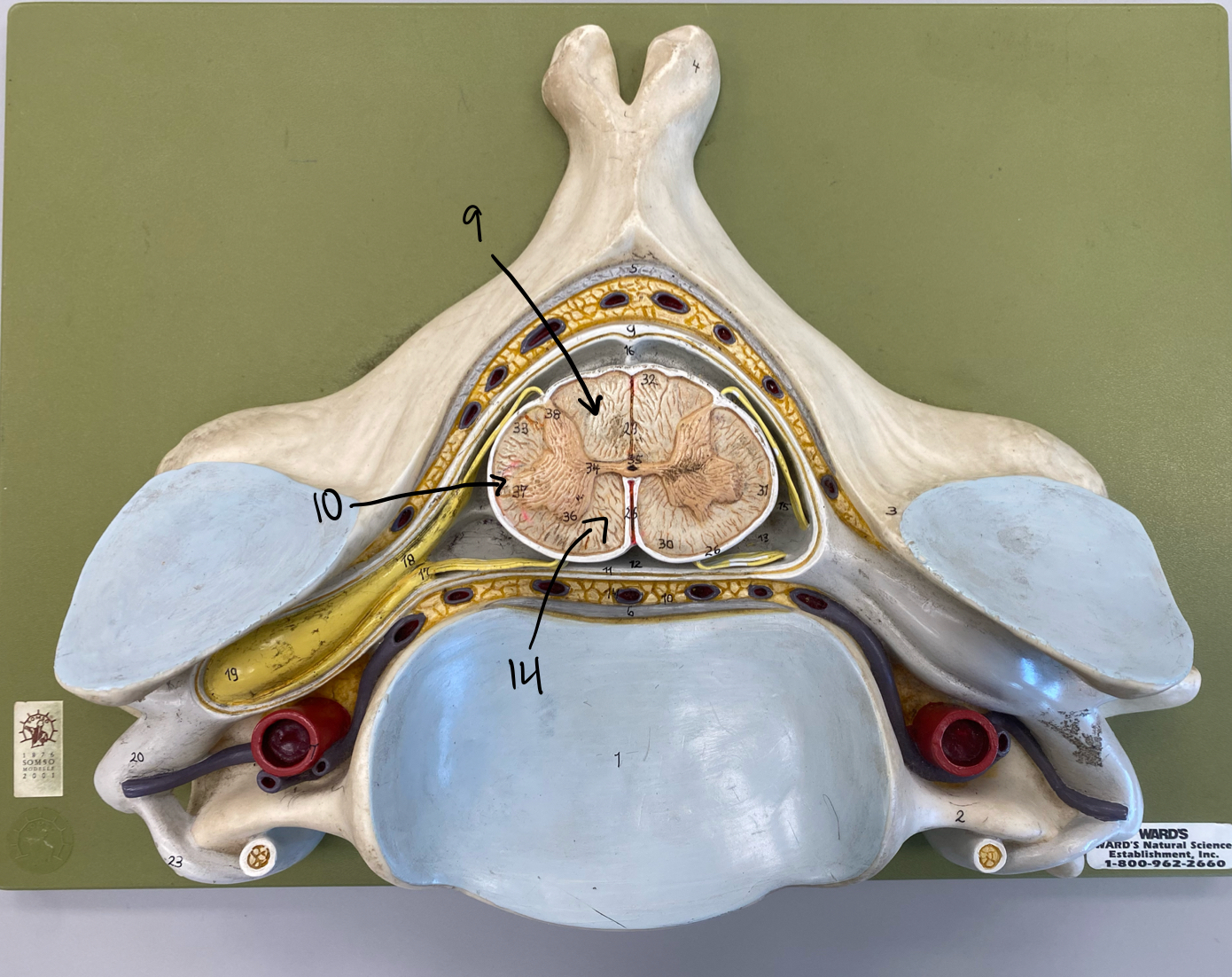
14
anterior white funiculus
What is the function of anterior white funiculus
ascending and descending pathways, sensory information
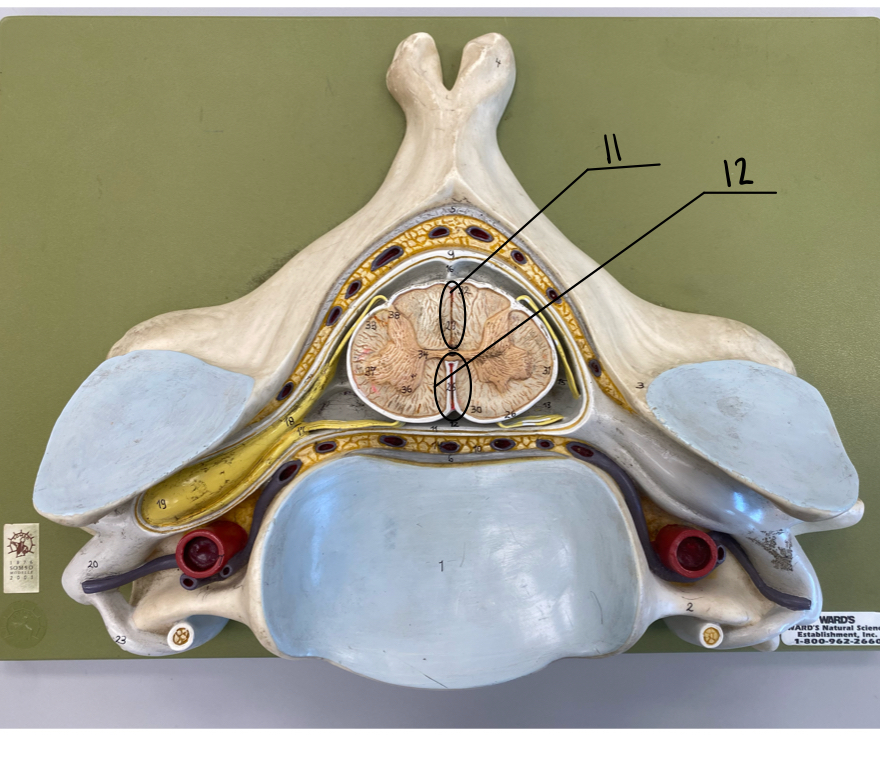
11
posterior median sulcus
What is the posterior median sulcus
seperate the posterior fulcus, shallow groove

12
anterior medial fissure
What is the function of anterior median fissure
midline symmetrical right and left halves and extend a long it length

13
central canal
What is the function for central canal
has cerebrospinal fluid. transport nutrient to spinal cord
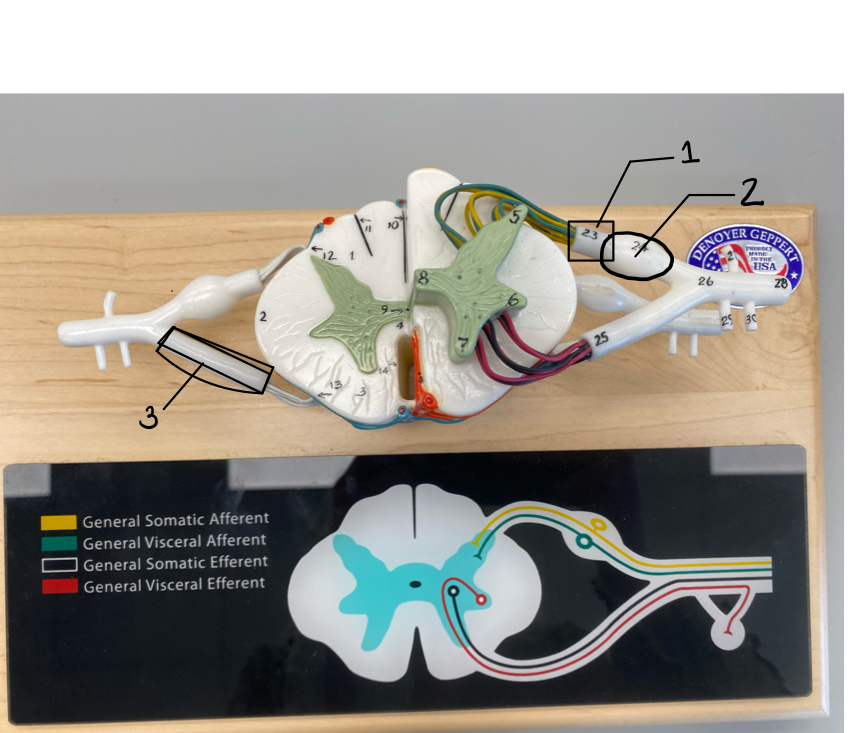
1
Dorsal root
What is the function of dorsal root
return sensory information to the CNS
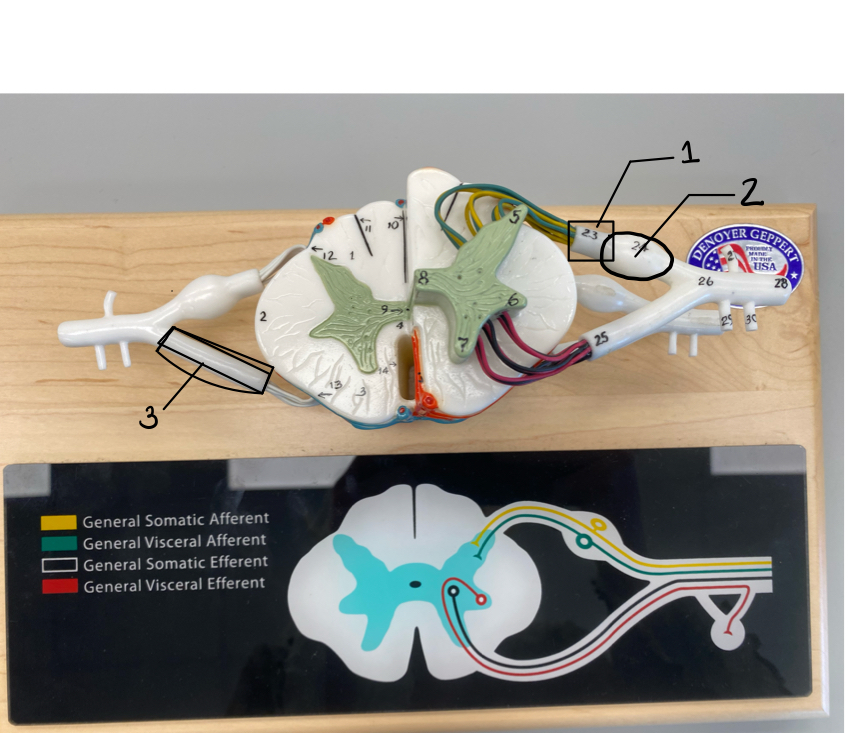
2
dorsal root ganglion
What is the function of dorsal root ganglion
sensory neurons, cluster of nerve cells, pain, touch, temperature
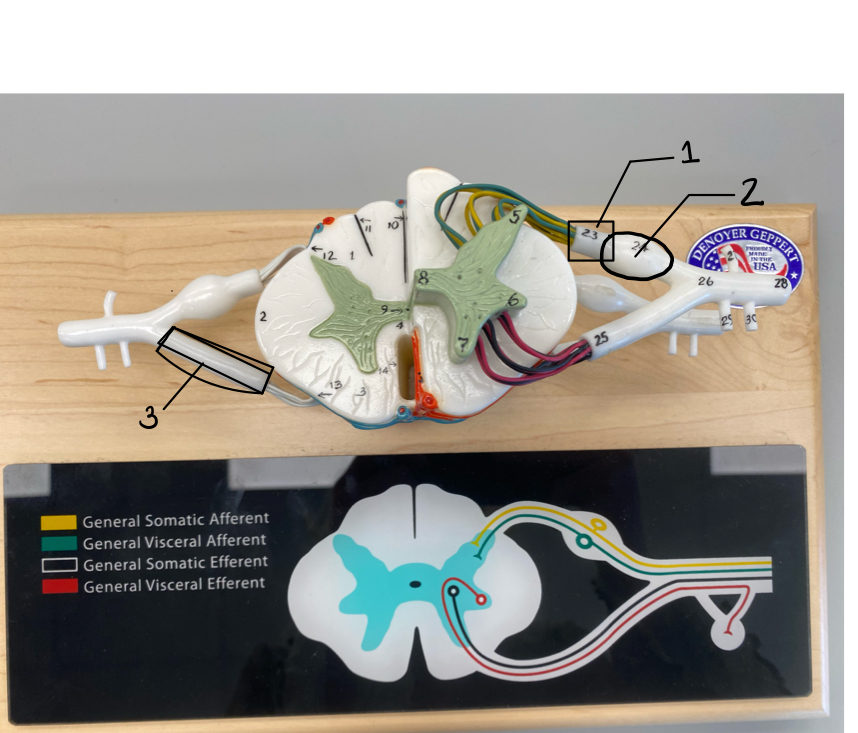
3
ventral root
What is the function of ventral root
motor signals
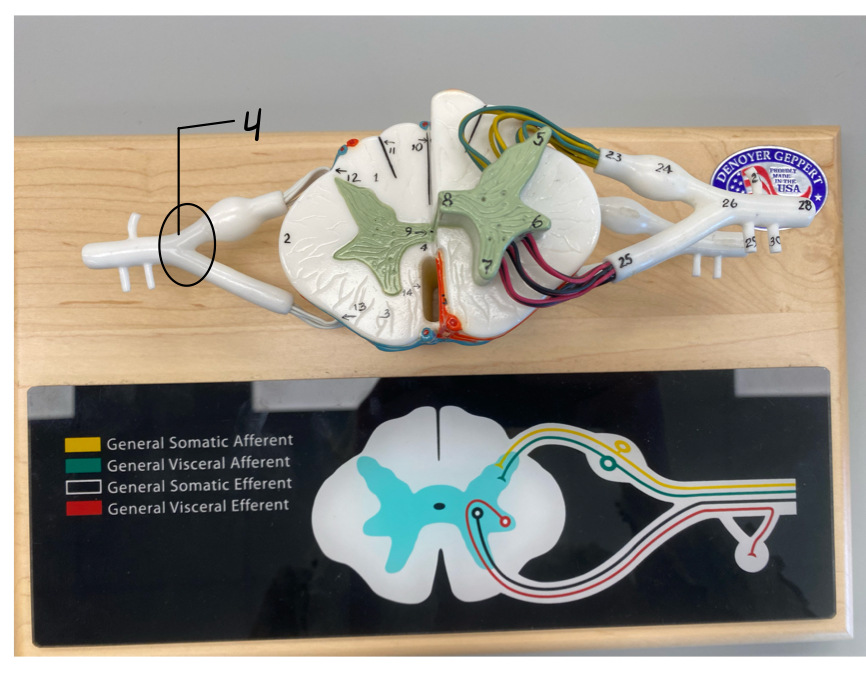
4
spinal nerve
What is the function of spinal nerve
communication mixture sensory and motor
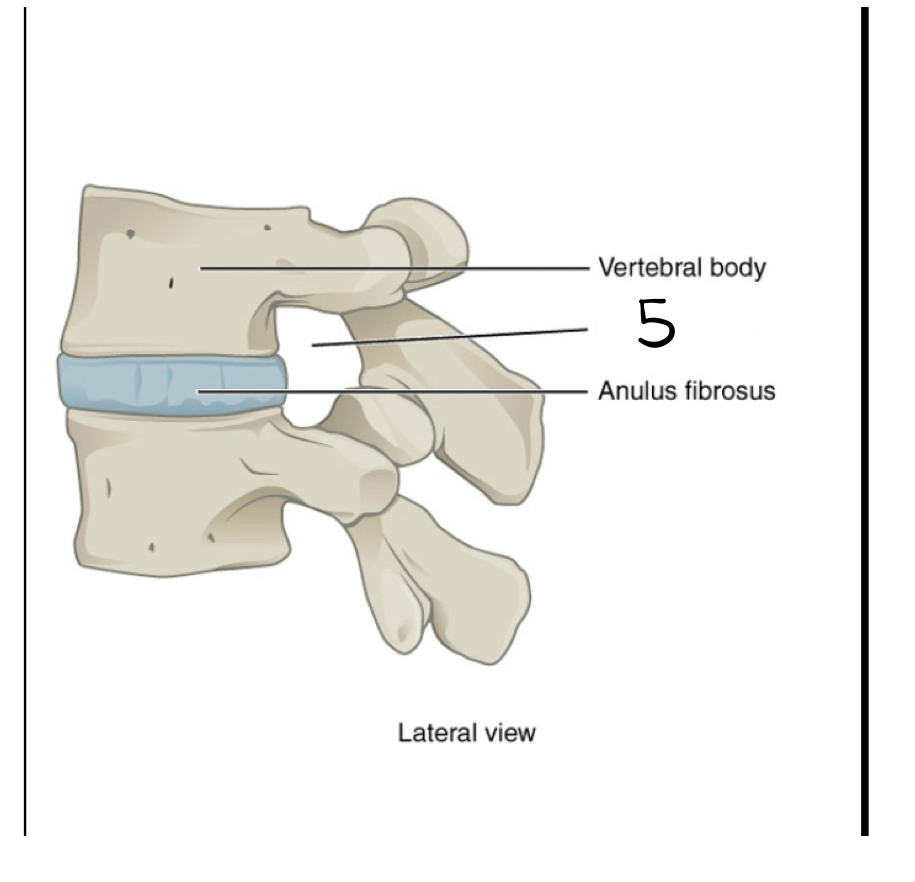
5
intervertbral foramen
what is the function of intervertebral foramen
carry sensory and motor signals to all part of the body
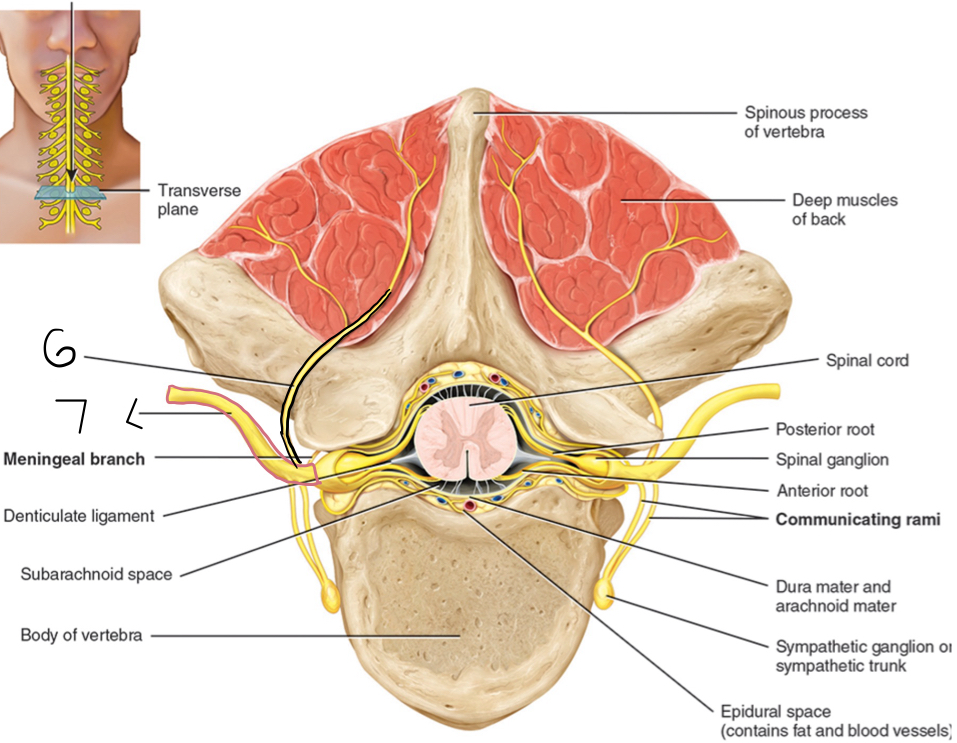
6
dorsal ramus
what is the function of dorsal ramus
carry both motor and sensory information back of the body
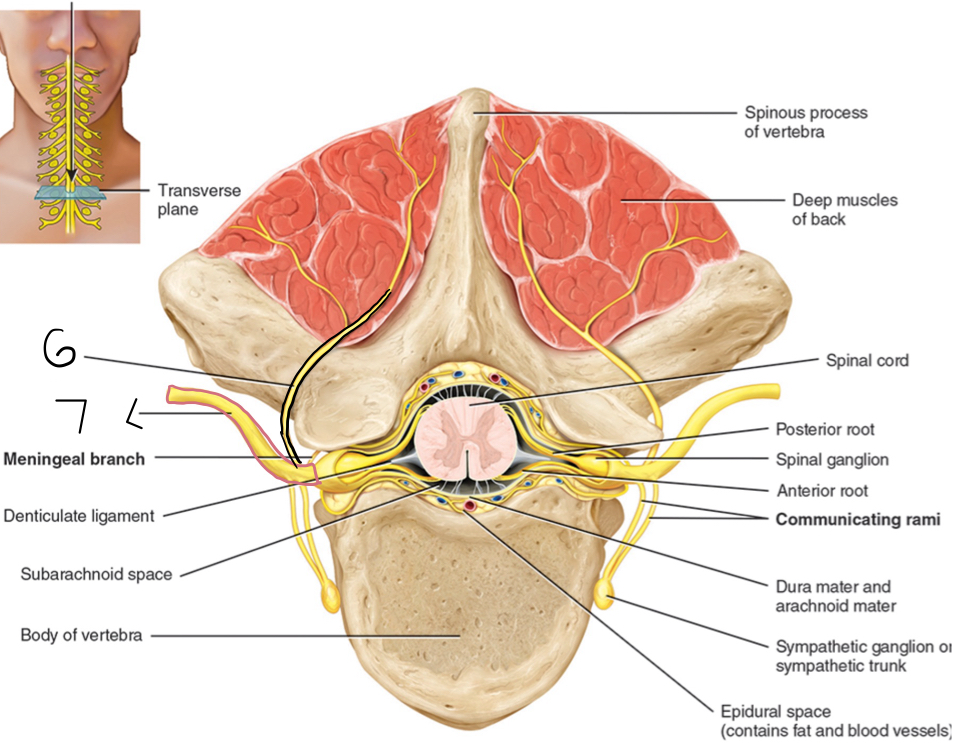
7
ventral ramus
what is the function of ventral ramus
sensory and motor to trunk and the limbs

Cervical Plexus 1
phrenic

Brachial Plexus 2
musculocutaneous
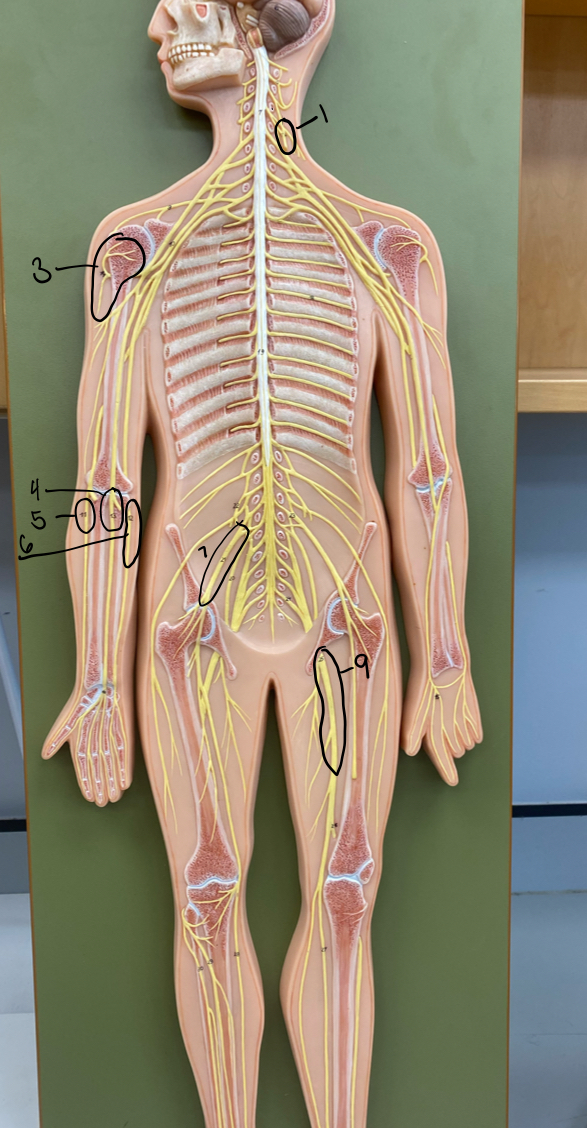
3
axillary

4
median
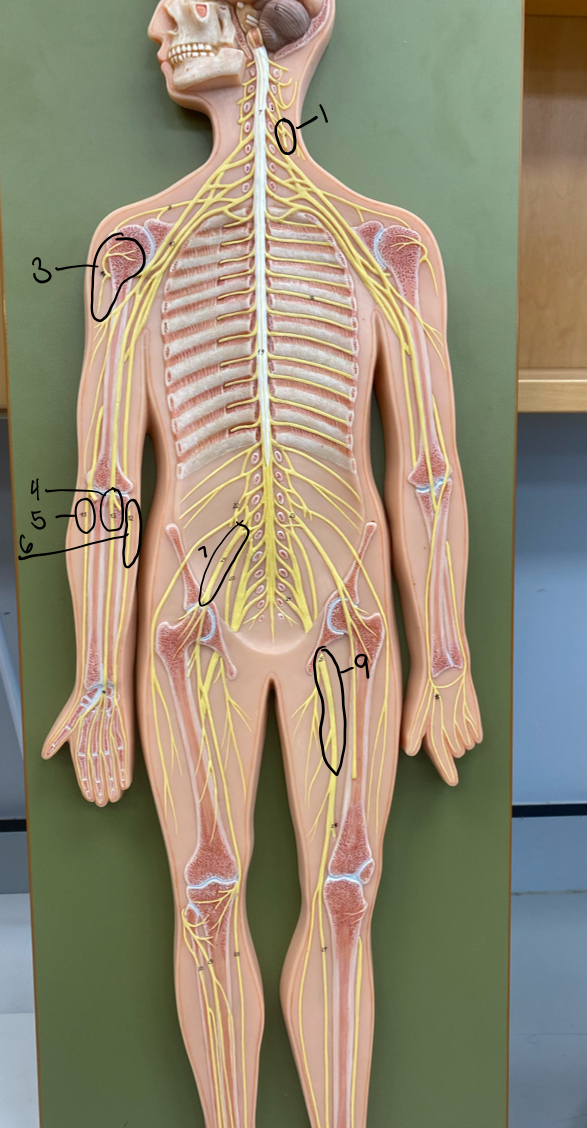
5
radial
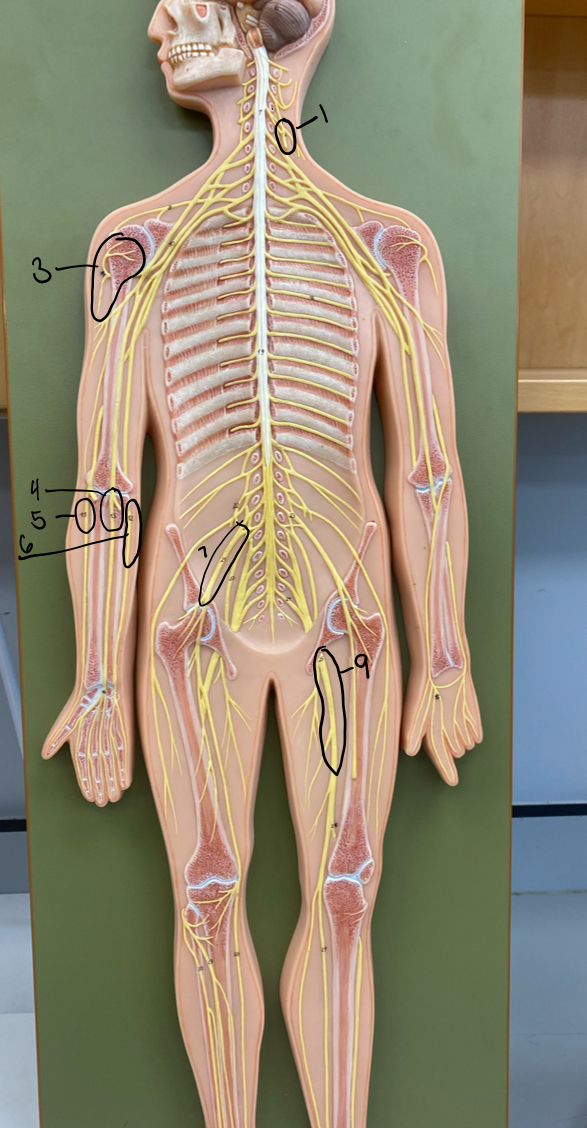
6
ulnar
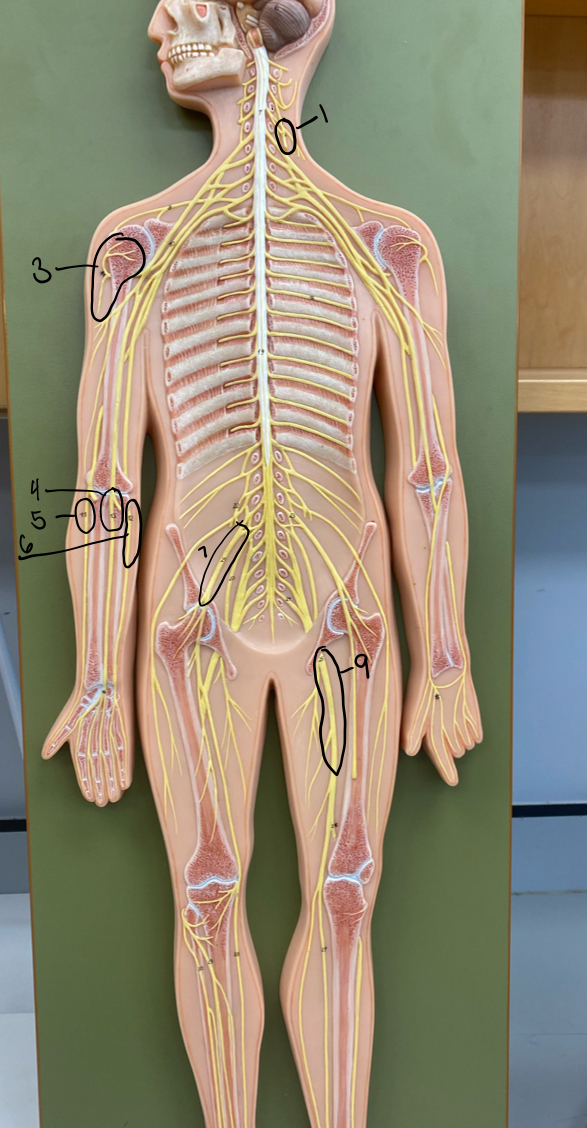
lumbar plexus 7
femoral
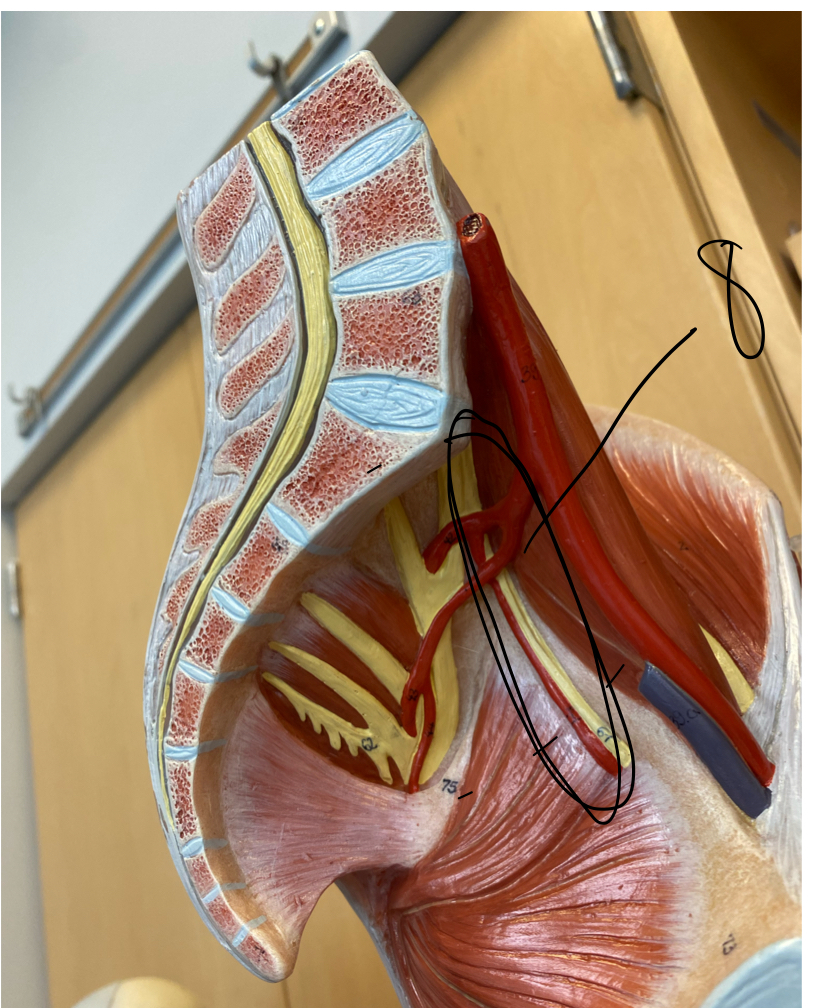
8
obturator
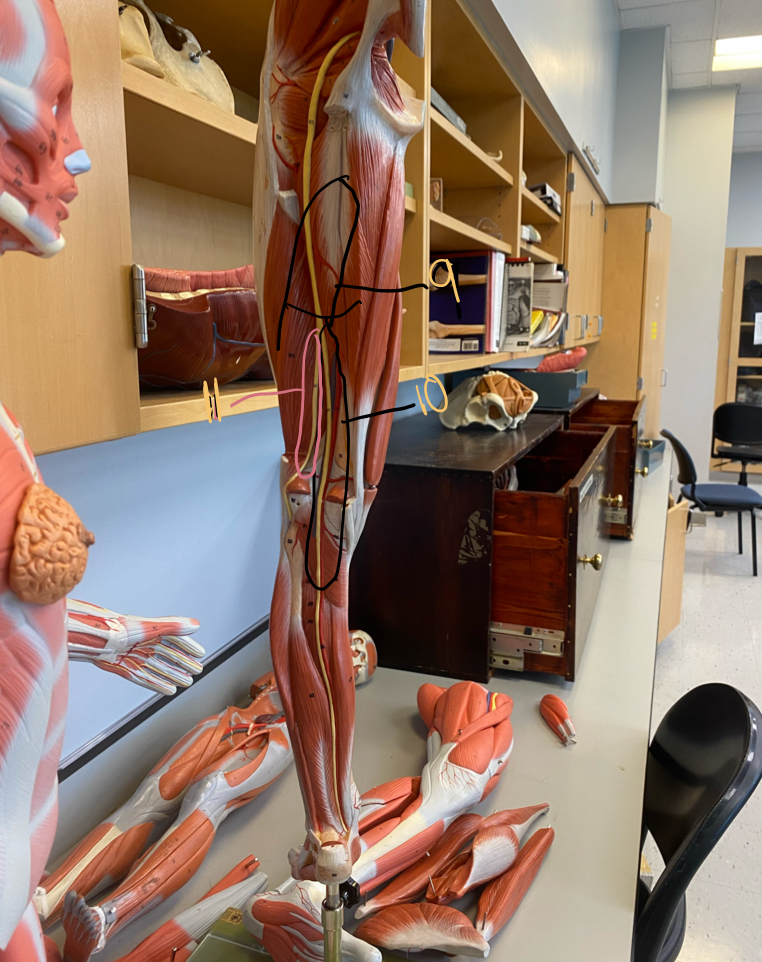
sacral plexus 9
sciatic
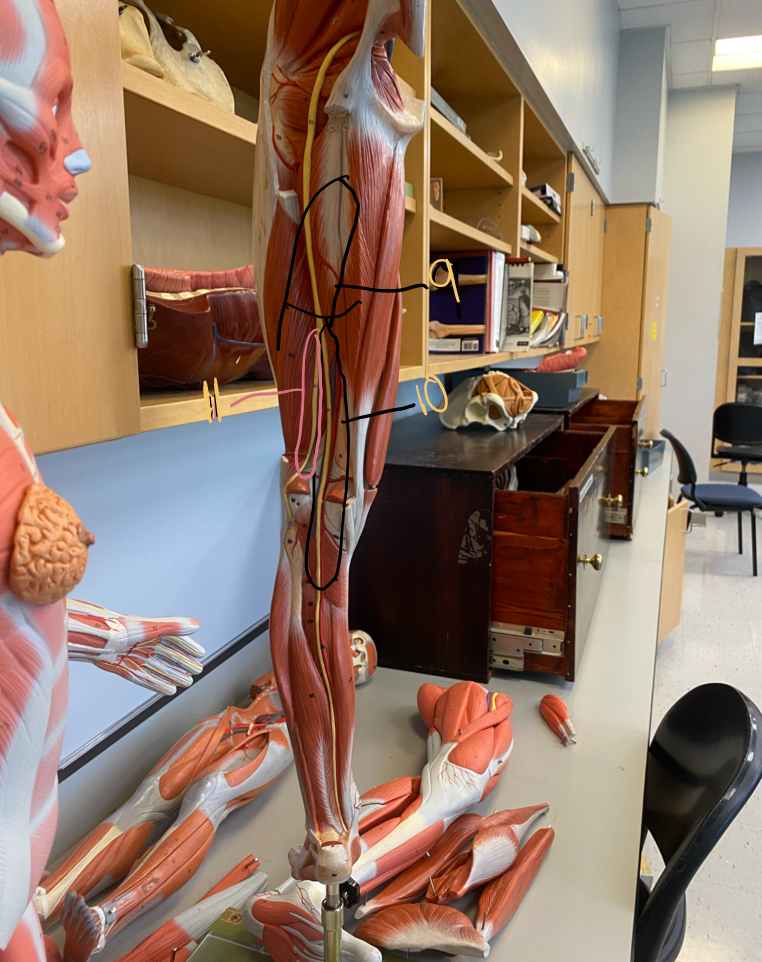
10
tibial
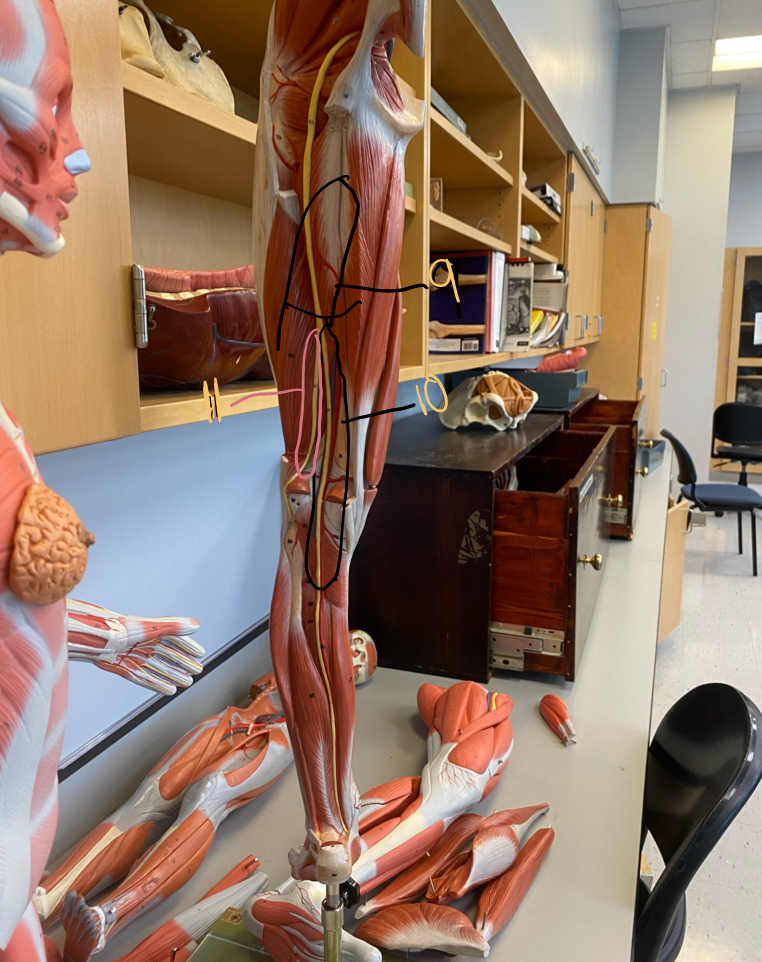
11
common peroneal (fibular)
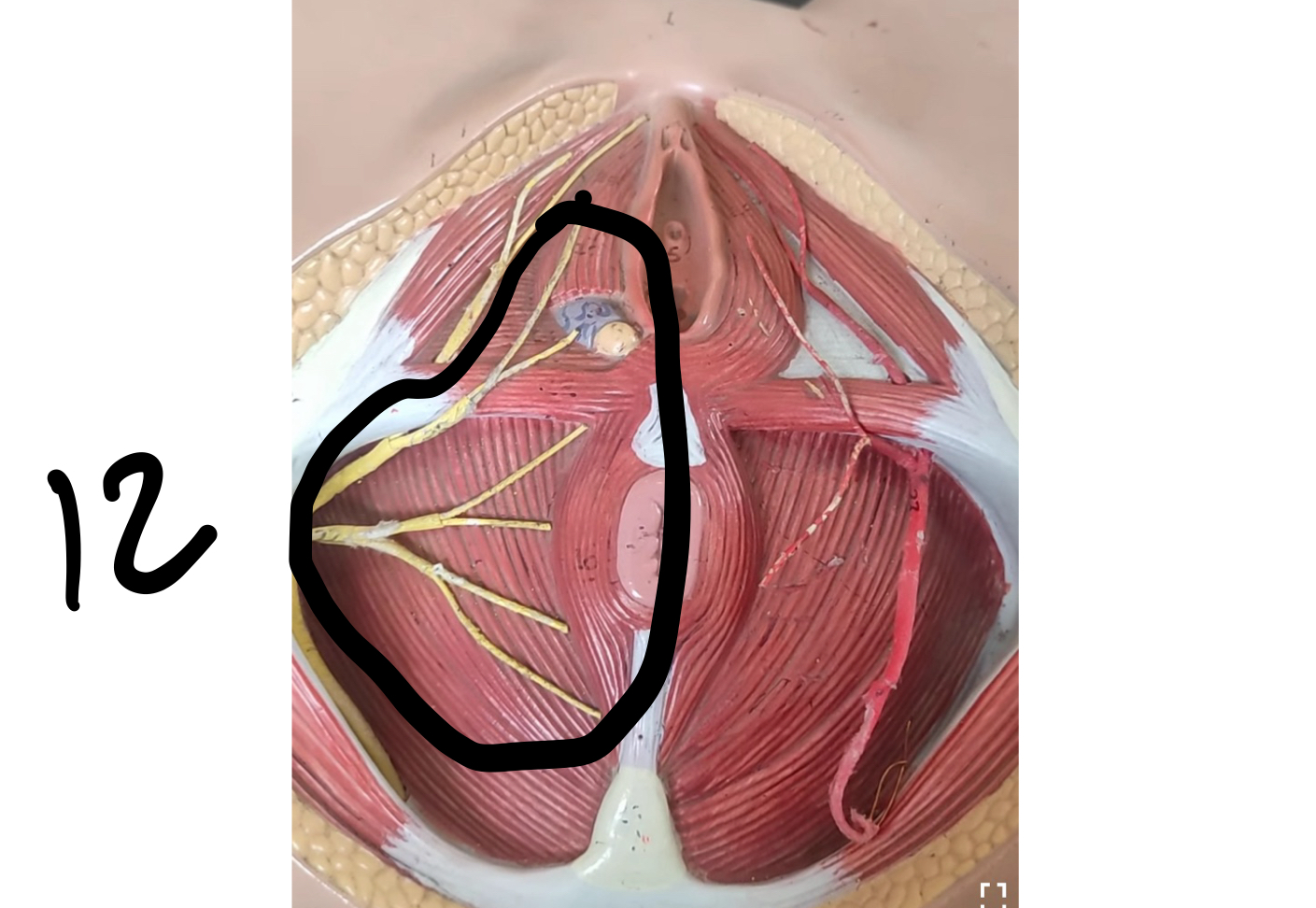
12
pudendal
Tell me the function and innervation of phrenic nerve
it supplies nerves to diaphragm and provides motor and sensory information to it
Tell me about the function and innervation of musculocutaneous nerve
control motor movement in the arm and sensory input for the forearm, bicep brachii
Tell me the function and innervation of axillary nerve
innervates both muscle and skin, motor function to deltoid
Tell me the function and innervation of median nerves
motor and sensory in the forearm and upperlimb and wrist
Tell me about the function and innervation of radial nerve
muscle on the back of the arm and provide sensory infor for the back of the hand and forearm
what is the function and innervation of ulnar?
motor and sensory info of forearm and hand
what is the function and innervation of femoral nerve
innervate muscle that allow hip flexion, motor and sensory functions
what is the function and innervation of a obturator nerve
motor and sensory to thigh and adductor muscles
what is the function and innervation of sciatic nerve
motor and sensory information in the lower leg and foot
what is the function and innervation of tibial nerve
innervate muscle for plantar flexion, sensory information
what is the function and innervation of common peroneal (fibular) nerve
motor innervation of the leg muscle and sensory
what is the function and innervation of pudendal nerve
sensory and motor information for the pelvis
Reflex Pathways
neural pathways for responses to stimuli
Monosynaptic
single synapse
Stretch Reflex
tapping on tendons, like a knee jerk
Polysynaptic
two type of neurons, one CNS synapse
Withdrawal Reflex
pain, so stepping on a tack you withdrawal the leg
Crossed Extensor Reflex
maintain balance from withdrawing the limb
Spinal Tract
carrying message to the body
Funiculi (fibers tracts)
big bundle of nerve fibers
Fibers usually corss over to the
contralateral side
tracts involve a relay of consisting of
two or three neurons
tracts are
somatotopically mapped
tracts are paired
bilateral
Ascending pathways
going up the spinal cord
Fasiculus cuneatus and gracilis
detect pressure and proprioception
spinothalamic
detect temperature and pain
spinocerebellar
detect proprioception
Descending pathways
motor highways sending messages from brain to the muscles
Pyramidal
voluntary movement
lateral and anterior corticospinal
control motor activity on the contralateral side
extrapyramidal
motor pathways
tectospinal (lateral funiculus)
control the head during auditory and visual reflexes
rubrospinal (lateral funiculus)
control limb muscles on the contralateral side